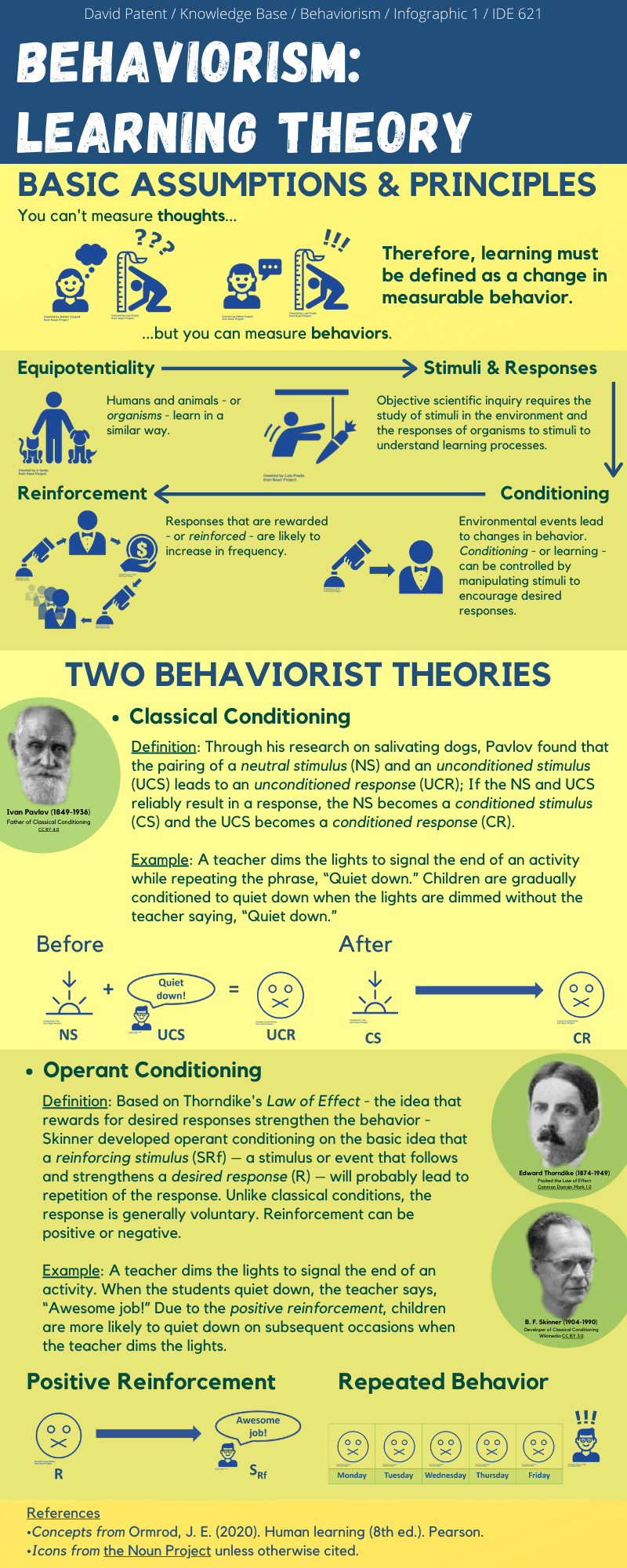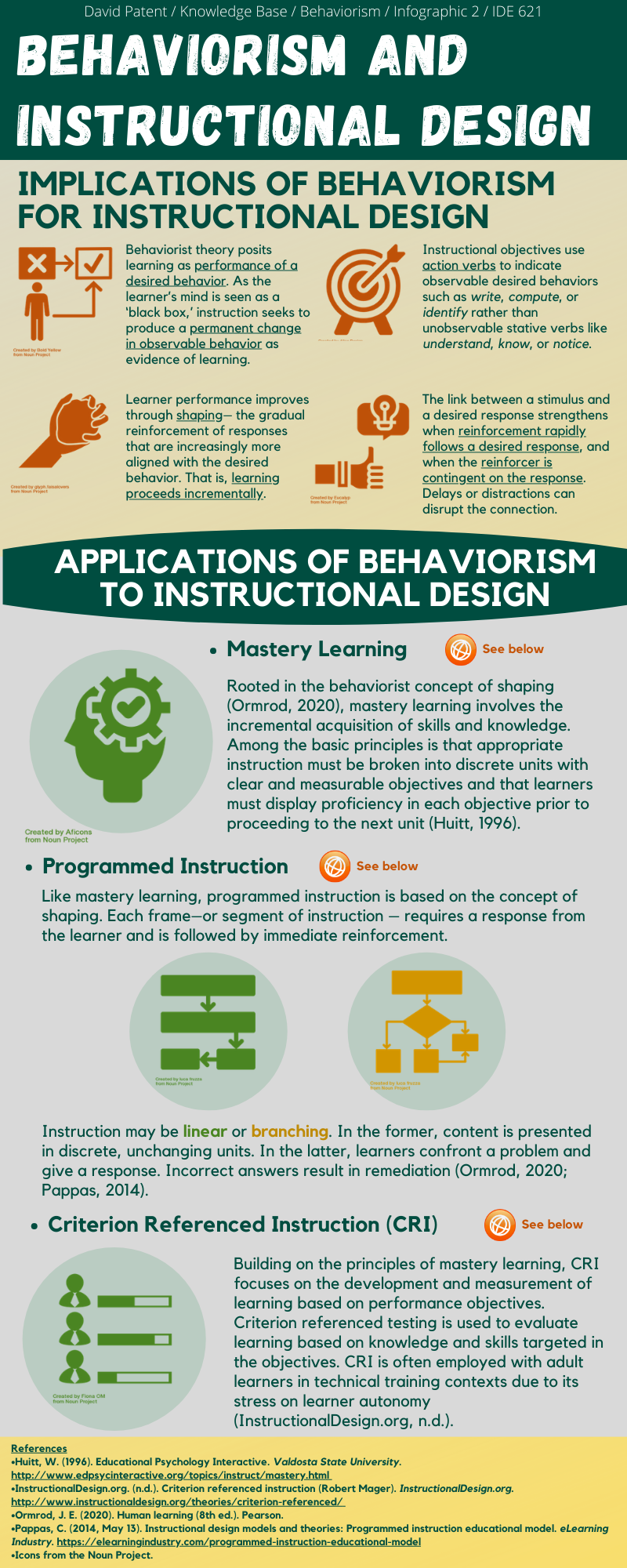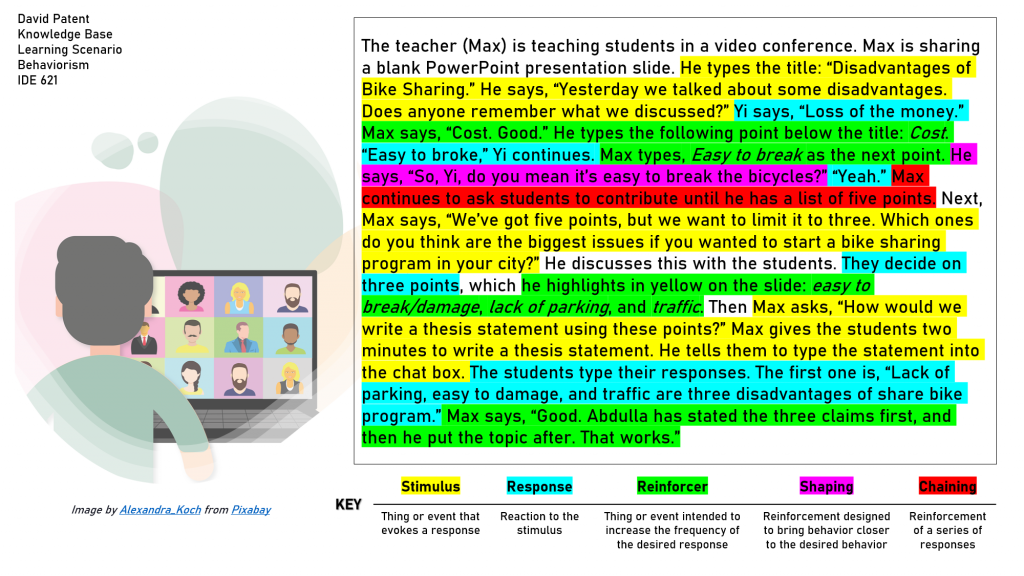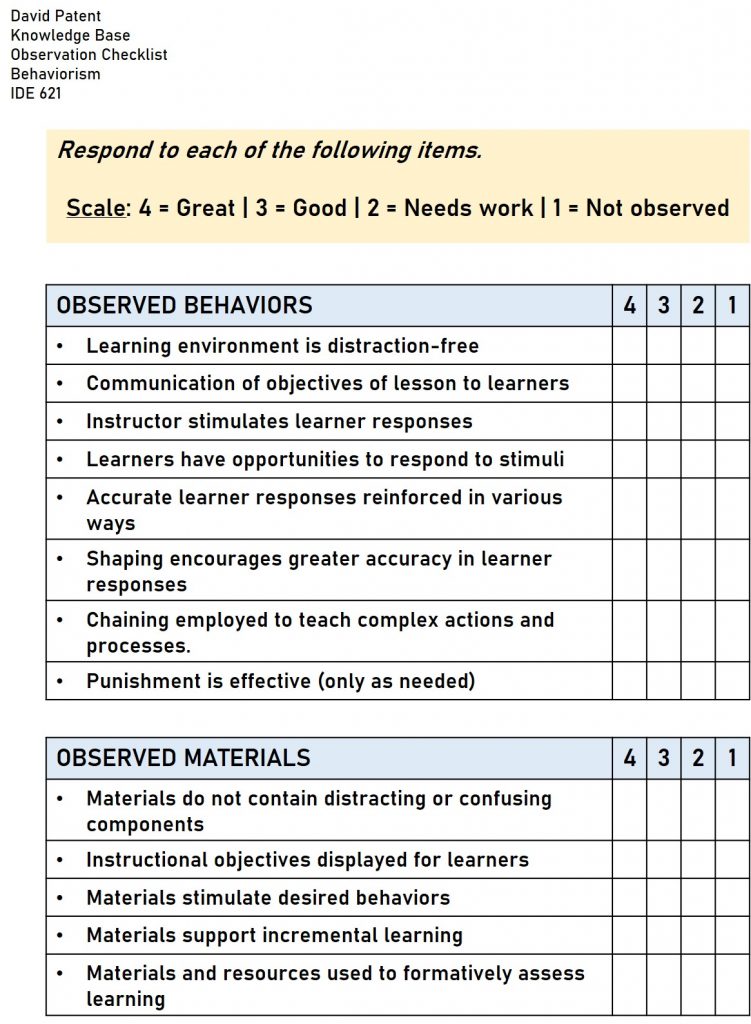David Patent – IDE 621 – Principles of Instruction and Learning – Fall 2020

Infographic 1: Learning Theory

Infographic 2: Instructional Design


- Mastery Learning – In this video, Jon Bergmann discusses how he has implemented mastery learning principles in his class not only to help students retain content but also to provide differentiated instruction in a flipped classroom that encourages student engagement and active learning.
- Programmed Instruction – In this 1983 episode of the Canadian TV series, Bits and Bytes, programmed instruction is discussed as the basis of computer-assisted instruction.
- Criterion Referenced Instruction – In this article, Pamela Hogle argues that criterion referenced instruction is a useful theory for the development of instruction for adult learners engaged in self-paced eLearning.
Learning Scenario

Observation Checklist

Reflection
Although I had some knowledge of behaviorist theory prior to taking this class, I feel that completing the knowledge base has solidified my overall understanding of this important theory of learning. In my first master’s program, which was in Teaching English to Speakers of Other Language, we spent little time discussing behaviorism, which is the theory underlying the Audiolingual Method. The focus in the Audiolingual Method is on repetition of chunks of language followed by positive or negative reinforcement. Most TESOL instructors now subscribe to some version of Communicative Language Teaching, which is opposed to behaviorism insofar as it focuses on meaningful communication in English between interlocuters and deemphasizes accuracy.
Nevertheless, from the readings, videos, and classroom work we have done related to behaviorism, it has clearly had profound effects on how we understand measurements and processes of learning. First, regarding measurement, the development of instructional objectives including an action verb that focuses on what learners should be able to do (rather than on what they should know or understand) is a key aspect of designing effective instruction. Second, with respect to processes, the concept of shaping – or incremental progress towards proficiency – is key to successful instructional strategy.
My misgivings regarding behaviorism might best be demonstrated with an example. It is widely acknowledged that ESL students struggle with the inflection -s at the end of the third person singular verb (e.g., I know; you know; she knows) even at advanced levels of proficiency. They often drop the -s sound. Some argue that this is a fossilized error – students keep making the error because they made it when they were initially studying the simple present form, and it wasn’t corrected. This view is in line with a behaviorist perspective; had they been properly conditioned not to make the error, they wouldn’t make it now. However, it you assess use of the third person singular with a discrete item test, intermediate and advanced learners will rarely make mistakes with the third person singular. They can generally identify, explain, and fix the error. The problem comes when the error is embedded in extended written or oral output produced by the learner. Learners seem to fail to notice or turn their attention to the error in their own utterances. This indicates that learners understand the rule regarding the third person singular, but that their attention needs to be directed toward the error of omitting the -s in some way. Behaviorism does not seem to have the explanatory power to address this type of learning problem.
